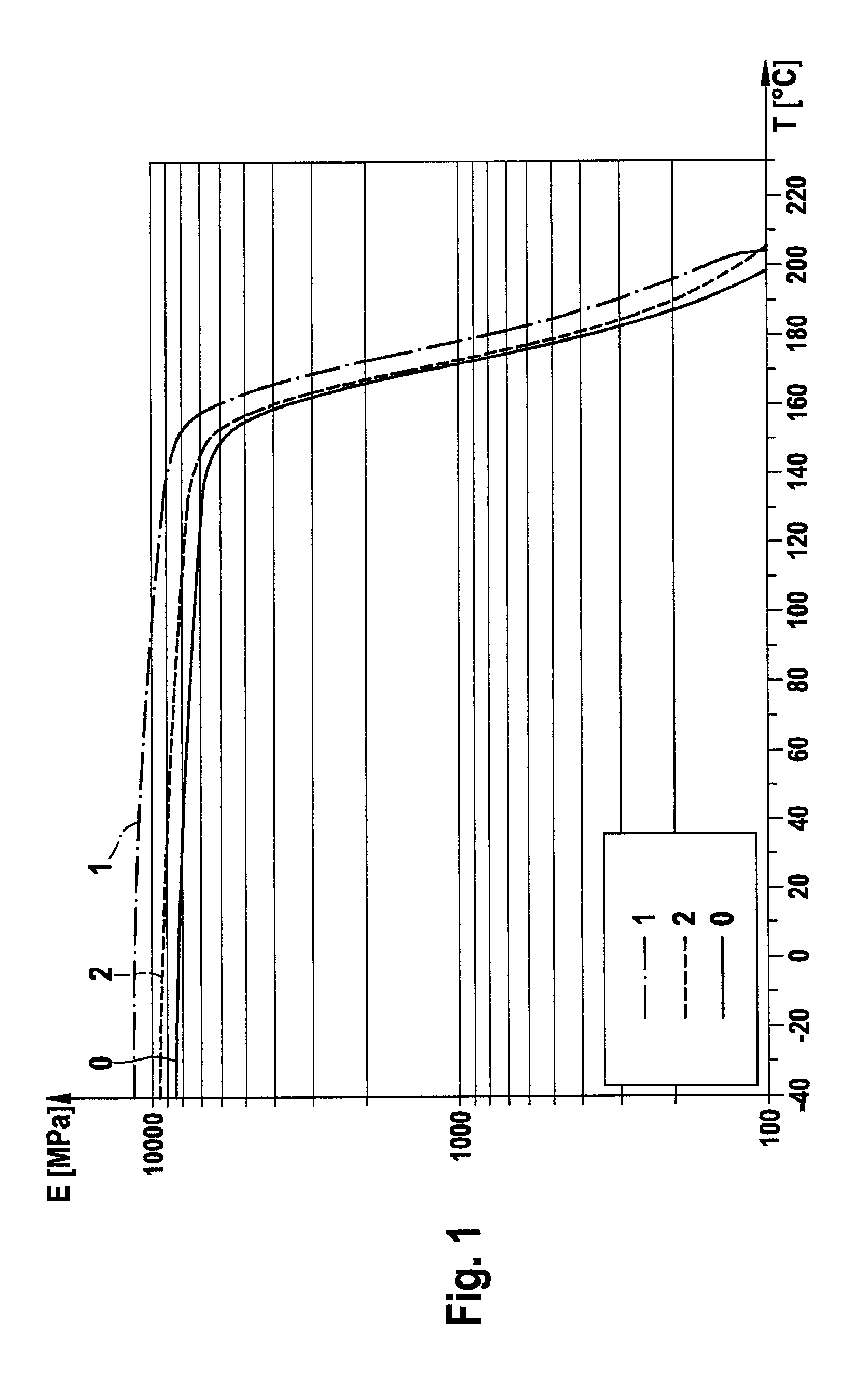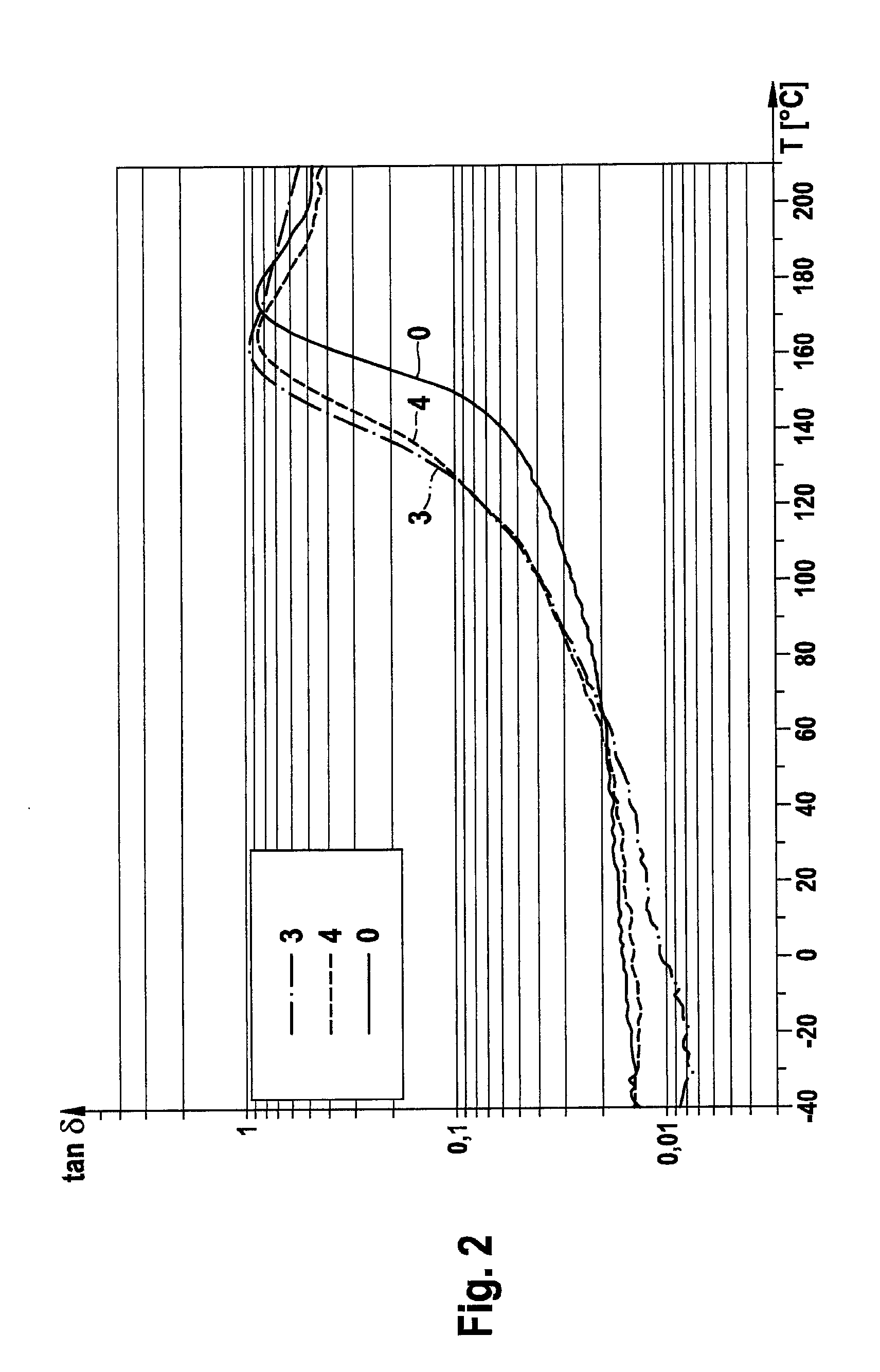Copolymer composed of a polyphenylene and a flexible chain component
a polyphenylene and flexible chain technology, applied in the field of polyphenylene, can solve the problems of insufficient strength, insufficient rigidity in combination with high tensile strength and vibration resistance, and inability to meet the requirements of certain applications, and achieve the effect of convenient or inexpensive production and/or commercial availability, easy or less expensiv
- Summary
- Abstract
- Description
- Claims
- Application Information
AI Technical Summary
Benefits of technology
Problems solved by technology
Method used
Image
Examples
examples
1. Preparation of tolyl ester-terminated poly(benzoyl-para-phenylene) (PBP-2E)
[0069]
[0070]8.2 L anhydrous, degassed N-methyl-2-pyrrolidinone (NMP), 17.11 g (0.13 mol) anhydrous nickel(II) chloride (NiCl2), 79.1 g (0.53 mol) anhydrous sodium iodide (NaI), 432.0 g (6.6 mol) activated zinc, and 415.8 g (1.59 mol) triphenylphosphine were placed in a 10-liter reactor having a KPG stirrer, an internal thermometer, and a reflux condenser, under nitrogen counterflow. The mixture was then stirred for approximately 3.5 h at an internal temperature of approximately 60° C. At this temperature, 1104.4 g (4.4 mol) 2,5-dichlorobenzophenone and 13.15 g (0.053 mol) 3-chlorobenzoic acid tolyl ester were subsequently added under nitrogen counterflow. During the initial two hours, the internal temperature was held by cooling the reactor so that 80° C. was not exceeded. Stirring was subsequently performed for 2 h at an internal temperature of approximately 70° C. After the reaction was complete, the coo...
PUM
| Property | Measurement | Unit |
|---|---|---|
| temperature | aaaaa | aaaaa |
| temperature | aaaaa | aaaaa |
| temperature | aaaaa | aaaaa |
Abstract
Description
Claims
Application Information
 Login to View More
Login to View More - R&D
- Intellectual Property
- Life Sciences
- Materials
- Tech Scout
- Unparalleled Data Quality
- Higher Quality Content
- 60% Fewer Hallucinations
Browse by: Latest US Patents, China's latest patents, Technical Efficacy Thesaurus, Application Domain, Technology Topic, Popular Technical Reports.
© 2025 PatSnap. All rights reserved.Legal|Privacy policy|Modern Slavery Act Transparency Statement|Sitemap|About US| Contact US: help@patsnap.com



